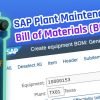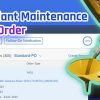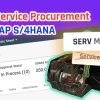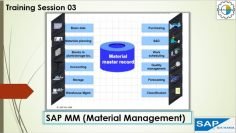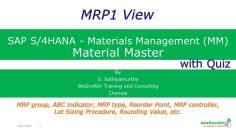This video provides a comprehensive walkthrough of the phase-based maintenance process using SAP S/4HANA Asset Management. The process is divided into nine phases, starting with the initiation phase and ending with the completion phase. The video demonstrates how to use various SAP Fiori applications to manage each phase of the process.
Summary:
1. Initiation Phase: The initiation phase begins when a machine operator or other employee identifies a problem with a machine, such as a compressor, and wants to notify the maintenance department. The employee can submit a maintenance request using the SAP Fiori application. The request includes a description of the problem and other relevant details.
2. Screening Phase: In the screening phase, a maintenance planner reviews the new requests and decides whether to move them forward or reject them. The planner can also put the notification on hold and request more information from the employee.
3. Planning Phase: During the planning phase, the maintenance planner plans all the work. This includes determining which spare parts should be used and ordered if they are not in stock. The planner can use the ‘Find Maintenance Notification’ application to view all notifications in the system and select the relevant ones for planning.
4. Approval Phase: In the approval phase, the planned work can be approved manually or automatically. The approval can be given by a maintenance manager or another authorized person. Once approved, the notification is released and can be processed further.
5. Preparation Phase: During the preparation phase, the maintenance planner monitors the availability of resources planned for the work, including components, stock and non-stock people, and external services. The ‘Maintenance Backlog Overview’ Fiori app can be used for this purpose.
6. Scheduling Phase: In the scheduling phase, the work is scheduled. The maintenance planner can use the ‘Manage Maintenance Planning’ application to define the maintenance planning packets. The planner can also assign the work to specific people.
7. Execution Phase: During the execution phase, the technician performs the job physically and then confirms it in the system using the ‘Perform Maintenance Jobs’ application. The technician can also record time and issue goods against the order.
8. Post-Execution Phase: In the post-execution phase, the maintenance planner does the final checks of the work performed by the technicians. This includes controlling goods issue, checking confirmations, and monitoring the status of purchase requisitions and purchase orders.
9. Completion Phase: The completion phase is the final step in the phase-based maintenance process. The maintenance planner does the very last checks of the maintenance order, including checking actual costs, confirmations, used spare parts, and other related aspects. Once all checks are done, the order is technically closed.
The video concludes by emphasizing the importance of collaboration between the maintenance department and the controlling department in settling the order.







